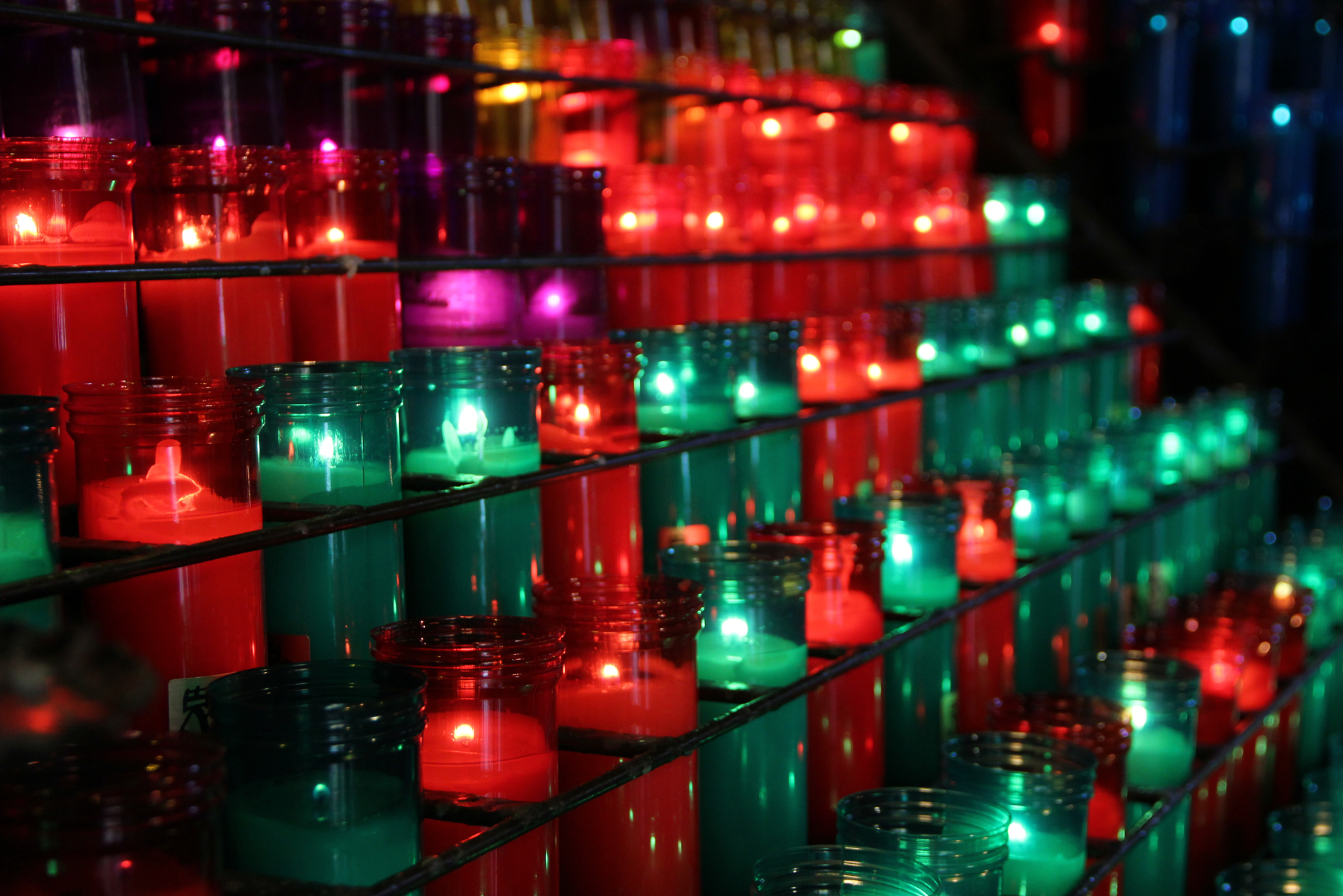News
The Colors of the Church Year
December 5, 2022

Every year designers and paint companies select a color of the year and show us how these colors can fill our homes with energy or give us the peaceful setting we need to clear our minds. The rundown this year is Pantone with Viva Magenta, Krylon declared Spanish Moss, Benjamin Moore announced Raspberry Blush, Dunn-Edwards has Terra Rosa, Behr revealed Blank Canvas, Sherwin-Williams proclaimed Redend Point, Dutch Boy proclaimed Rustic Greige, and Better Homes & Garden pronounced Canyon Ridge. Valspar could not decide and selected 12 livable paint colors that they say encourage self-expression and are adaptable in any space. This is for 2023 alone!
Colors play an important role in our lives. People use colors as symbols and associate specific colors with significant events. You wouldn’t wear purple to a Nebraska Big Red game! Colors speak to our emotions and call attention to the nature of the season or festival being celebrated. With each season of the church year and for festivals and special days, we change the colors in the sanctuary, vestments (stoles), and paraments. The colors help us tell our story of faith.
Color and its bright message can easily be taken for granted or mistaken for its purpose. The paraments, vestments, altar clothes, and banners, traditionally used in worship, are more than an attempt to decorate or give accent to the chancel. It’s true; interior design and decoration are important. But a greater service is demanded of our liturgical colors than merely making the surroundings “pretty.” Liturgical color complements the message. Colors coincide with scriptural teachings, express the spirit of the days and seasons of the Church Year, and set the mood for worship. These colors come out of the life and history of the Church. These colors visually remind and teach.
Around 200 AD, color became a focal point in Christian art. In the beginning, each color’s meaning was taking from Ancient Greek and Roman interpretations, but soon the Bible became the color guide for artists. A unified system of colors for churches developed only gradually and haphazardly until and through the Middle Ages. Today, we have a color system used by many Christian congregation including the Roman and Anglican churches in the United States and by many churches around the world.
The colors used by the ELCA:
- Blue symbolizes hope and may also be used during Advent. The rich, dark blue, used by many congregations, represents the color of the sky right before the sun appears in the morning. The use of blue originated in Scandinavia, probably because purple dye was too expensive for churches to use. Some congregations use purple in Advent, a color associated with royalty as the church awaits the newborn King.
- Purple, representing both royalty and penitence, is traditionally used during Advent and Lent.
- White and gold are used at Christmas and Easter calling to mind the purity and joy of Christ. White is used for Epiphany, the Baptism of Our Lord, and the Transfiguration of Our Lord. As we move into fall, we see white on Holy Trinity Sunday and Christ the King Sunday, suggesting light, joy, and the celebration of the Lord. Lesser festivals and commemorations are white, unless a martyr is celebrated, in which case bright red is suggested. Paraments and vestments are often changed to white for Maundy Thursday.
- Scarlet, a vivid red or orange, is used use during Holy Week; from Palm Sunday to Maundy Thursday. Scarlet’s use during the somber days of Holy Week help to offer a different message. It a color anciently associated with the passion, the color of blood.
- Red symbolizes the color of fire to represent the Holy Spirit on the Day of Pentecost and times when the work of the Holy Spirit is emphasized. During Holy Week it represents the blood of Christ. Red is also used for the ordinations of pastors and deacons.
- Green represents growth and is used during Ordinary Time (the season after Epiphany and the season after Pentecost.) In a sense, green is a “neutral color” in the church.
- Black is usually used on Ash Wednesday since it is the color of the ashes to which we will all return. On Good Friday, black is a symbol of deep sorrow, utter darkness, and death.
The ELCA has a wonderful resource explaining the colors and seasons of the church, available for use in congregations as long as the copyright notice appears on each copy. Access that resource here.
Since Advent is the start of the church year, sharing this resource with your community in December or January would be timely learning tool. Posting a copy in the sacristy may serve as a teaching tool for altar guild and worship assistants of all ages. Exploring the colors and symbols of the season with young disciples will help equip them to even teach adults – some of whom have grown so accustomed to the worship space they miss the beauty and symbolism of the colors.
While the paint companies are pushing Viva Magenta, Spanish Moss, Raspberry Blush, and more – we will continue to embrace our liturgical colors steeped in the life of Christ the King. The dark blue, white, green, scarlet, purple, black and bright red ground us in our story of faith.